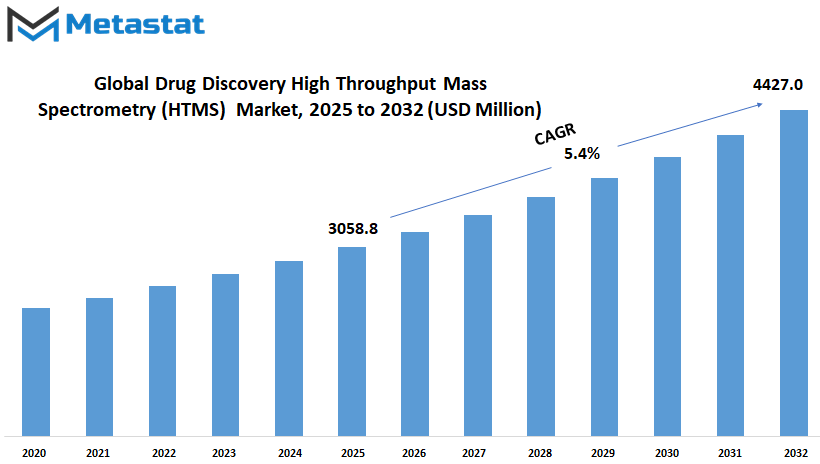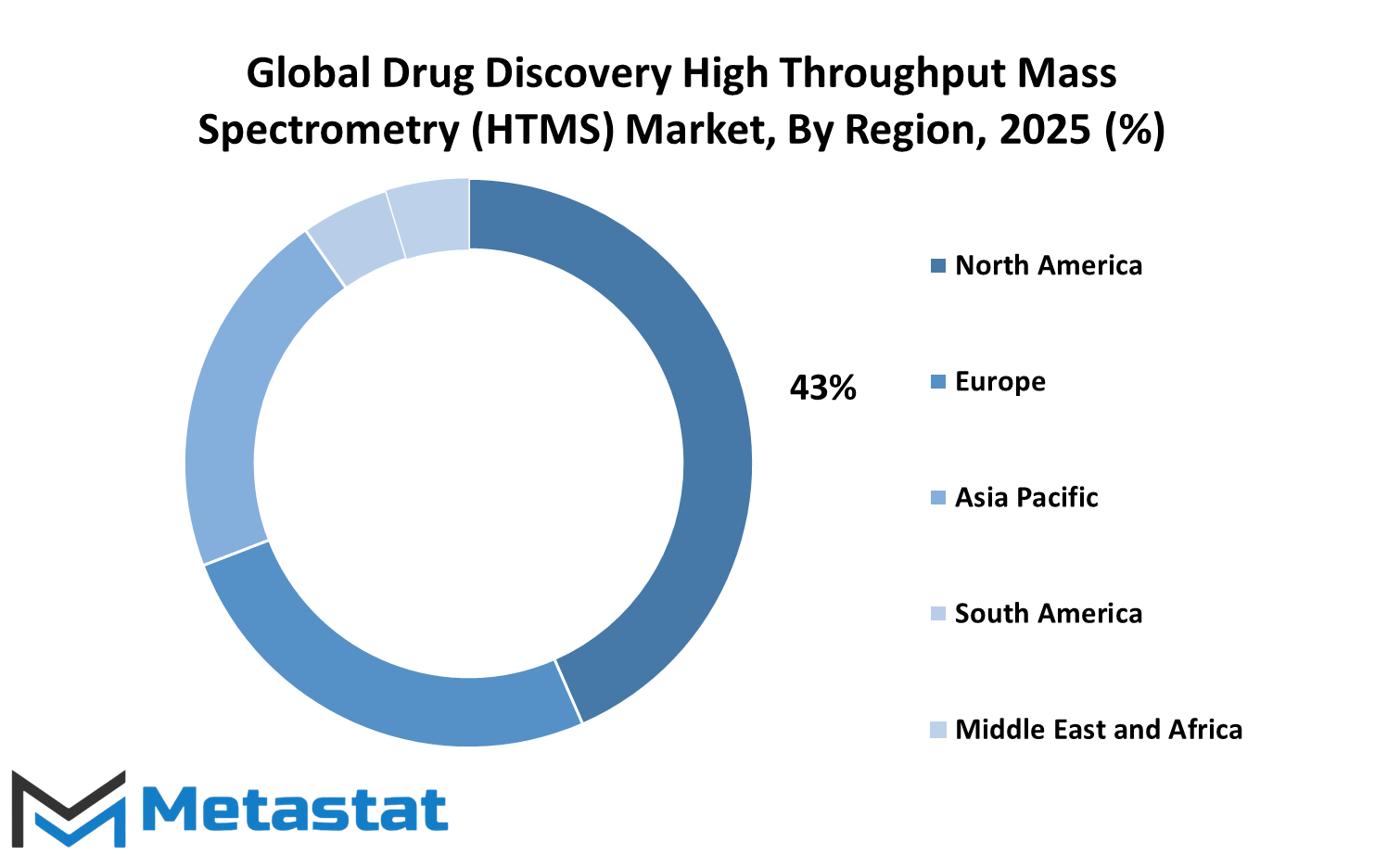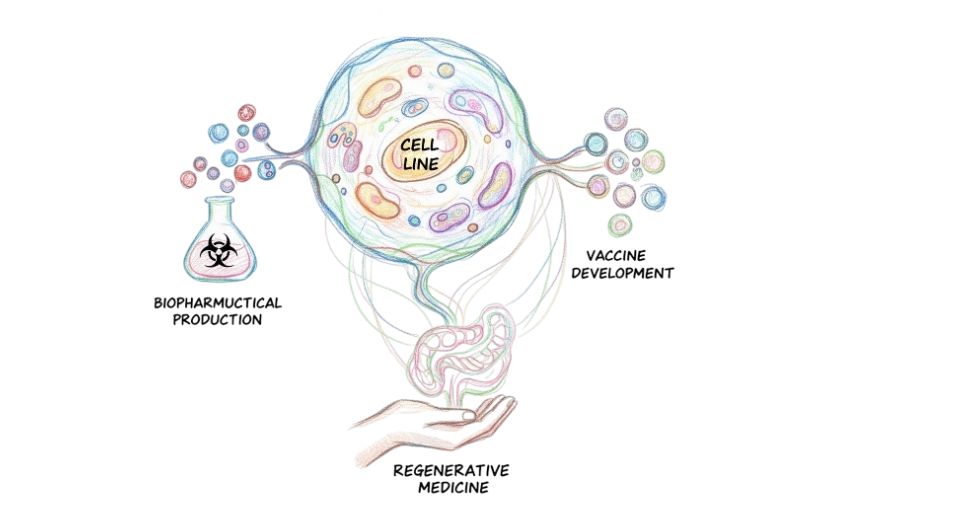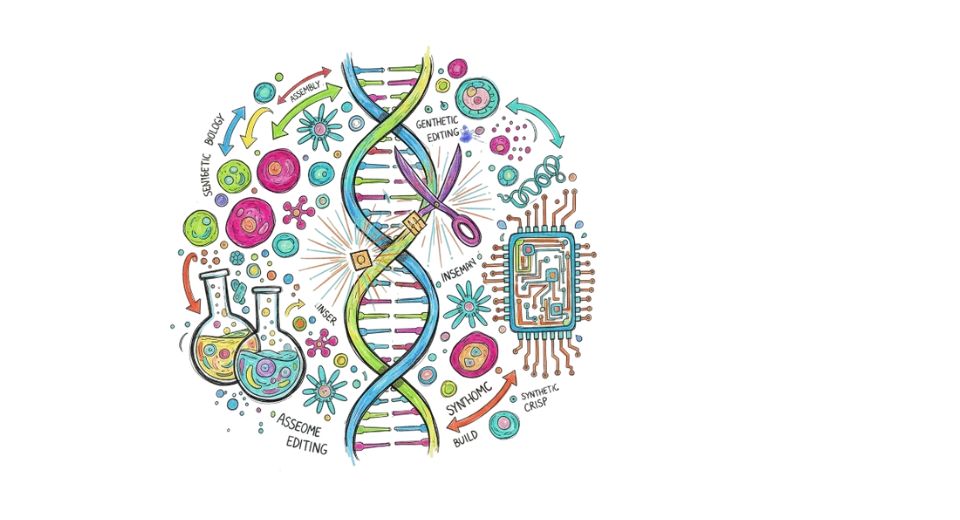MARKET OVERVIEW
The Global Drug Discovery High Throughput Mass Spectrometry (HTMS) Market serves the pharmaceutical and biotechnology industries by enabling fast and accurate molecular analysis. Its activities are centered on developing and employing mass spectrometry technologies for high-throughput applications in drug discovery. This is a market that will gain traction through increasing innovative drug development strategies since it will meet the demand that comes from research institutions, pharmaceutical companies, and biotechnology firms that want to be faster and more efficient in the analytical solutions they use.
Mass spectrometry has formed the basis of analytical chemistry, and when paired with high-throughput screening, it accelerates the whole development cycle of drug discovery. The focus of the Global Drug Discovery High Throughput Mass Spectrometry (HTMS) Market is on the latest instruments and methods used to rapidly identify, quantify, and structurally analyze compounds. HTMS cuts down on the time needed to evaluate potential drug candidates, starving both sample preparation and lengthy analysis typical of previous methods. Pharmaceutical and biotechnology companies will always look for tools that improve efficiency; hence, HTMS comes as a solution to demand precision and speed.
As drug discovery pipelines expand, the demand for highly sensitive and accurate screening techniques will continue to shape the Global Drug Discovery High Throughput Mass Spectrometry (HTMS) Market. This market encompasses a number of instruments and technologies that are designed for use with large amounts of sample without compromising analytical integrity. The processing of thousands of compounds in very short periods speeds up decision-making on drug development. Researchers will use more and more mass spectrometry techniques that not only detect molecular masses, but also produce structural insights, thus guiding medicinal chemists to better therapeutic candidates.
Quality control becomes very stringent for pharmaceutical research purposes, and mass spectrometry is an excellent tool in ensuring the molecular accuracy. The Global Drug Discovery High Throughput Mass Spectrometry (HTMS) Market is designed to capture institutions refining screening, per se, automated, advanced data analysis, integrated with the existing workflow. With mass spectrometry technology advancing, detection limits; processing of data is improving further and keeping a tighter hold on instrument sensitivity, which probably seals HTMS as a feature of modern drug discovery.
Growth potential for the Global Drug Discovery High Throughput Mass Spectrometry (HTMS) Market will be expected from collaborations with pharmaceutical companies, academic institutions, and technology providers to create new applications. As the complexity of drug molecules increases, not only will this complexity require increasingly elaborate translation and analytical methods, but it will also increase the market for high-throughput applications. The market will not stop here, software development to enhance data interpretation will emerge to minimize manual errors and improve efficiency.
Regulatory frameworks governing research in the drug industry will further impact Global Drug Discovery High Throughput Mass Spectrometry (HTMS) Market. Adoption will also be seen into high-throughput mass spectrometry technologies in a bid to ensure meeting required safety and efficacy standards in drug candidates. With regulatory compliance being called by most of these technologies, such investments will be geared towards drug development process without hitches.
The future of the Global Drug Discovery HTMS Market will remain a significant portion of pharmaceutical research, as indeed the path of technology, regulations, and cooperation between the industry are paving ways for. Furthermore, science is increasingly improving the analytical tools, and mass spectrometry holds its strong section as a fundamental accelerator of drug discovery and optimization in research outcomes.
Global Drug Discovery High Throughput Mass Spectrometry (HTMS) market is estimated to reach $4427.0 Million by 2032; growing at a CAGR of 5.4% from 2025 to 2032.

GROWTH FACTORS
The Global Drug Discovery High Throughput Mass Spectrometry (HTMS) Market will grow from advanced medical research developments and pharmaceutical evolution that will dictate the future of healthcare. Among the efficient drug discovery methods is high throughput mass spectrometry, which researchers have started using because it provides a means of quickly and accurately measuring the biological mass of samples. The more resistant diseases get to ordinary treatments, the greater will be the need for precise and fast methods of drug discovery.
Investment in pharmaceutical research is a significant driver of the market. Organizations require resources to develop new therapies. High-throughput mass spectrometry is, thus, an integral part of screening possible drug candidates, as it allows scientists to screen large libraries of compounds in a very short time, thereby accelerating the drug development pipeline. Another aspect fueling growth is the high incidence of chronic illnesses, due to which the urgency to find adequate medications has increased. More healthcare providers look for better treatment alternatives, consequently improving the demand for novel drug discovery tools.
Even with all these good fortunes, challenges are bound to slow down the market growth. The relative high cost of the mass spectrometry instruments and the skilled people who can operate them greatly limit the use. Because of budget constraints, many research facilities, especially smaller laboratories, will find it difficult to outfit their laboratory with such systems. In addition, delayed drug development trails due to regulatory hurdles may have adverse effects concerning the new treatment medications from reaching patients soon. Concerns to affect the market growth are indeed available, but the improvements in technologies would probably lift most things with time.
In the future, more developments in automation and artificial intelligence will revolutionize the way high-throughput mass spectrometry will be applied in drug discovery. Through better software and machine-learning algorithms, much more speedier and much more accurate data analysis will allow researchers to pinpoint promising drug candidates with significantly improved precision. As the technology continues to evolve, companies will work toward making it more accessible, cheaper, and user-friendly.
Emerging biopharma companies will create a growth impetus in the market, while increased synergy between research institutions and technology providers will ensure their new expansions. Demand will also come from the concept of personalized medicine, which treats patients as different individuals based on their genetic profile. The market will keep growing with improved solutions for drug development through continuous research and technologization, thus enhancing patient care. There are huge potentials in the future, and such companies would shape the next generation of drug discovery by focusing on innovation.
MARKET SEGMENTATION
By Type
The Global Drug Discovery High Throughput Mass Spectrometry (HTMS) Market will expand with an ever-increasing pace of pharmaceutical research. This need for assurance in drug discovery that is faster and more accurate is being felt in laboratories and pharmaceutical companies adopting very advanced mass-spectrometry technologies. All these factors are being driven by the need for precision in identifying and analyzing chemical compounds so that researchers can make drugs more effectively. High-throughput mass spectrometry will become even more important in rapidly identifying promising drug candidates, responding to challenges in health care in the future.
In the front line of advancements support for any kind of drug discovery is the advancement in the ionization technology. Different methods are under refinement, such as Electrospray Ionization (ESI), Matrix-Assisted Laser Desorption/Ionization (MALDI), Atmospheric Pressure Chemical Ionization (APCI), and Desorption Electrospray Ionization (DESI), to attain better accuracy and sensitivity. These technologies come in handy for researchers to analyze such heterogeneous biological samples, which eventually lead to drug discovery. The focus on new diseases will require pharmaceutical companies to rapidly screen large numbers of compounds. Development in this area has necessitated increasing reliance on high-throughput systems able to carry out sample processing at rapid rates without compromising on accuracy.
The use of advanced mass-spectrometry techniques is expected to transform drug discovery through shortening the time required for placing new treatments on the market. Therefore, more precise data will be available to researchers to provide them with increased confidence in picking promising candidates. Smaller sample throughput does not mean low levels of confidence in using these technologies either, making them attractive. With increasing integration of artificial intelligence and automation into laboratory processes, high-throughput mass spectrometry will become increasingly efficient. Automated systems will perform sample preparation and data analysis with minimal human conditions for errors and increased productivity.
The Global Drug Discovery High Throughput Mass Spectrometry (HTMS) Market will therefore be shaped by companies that invest for innovation. Pharmaceutical and biotechnology firms will look for solutions that enhance drug screening speed and accuracy, creating greater demand for improved ionization methods. These companies will be concentrating on ensuring that the technologies they develop are user-friendly and cost-efficient, all the while satisfying the growing demands from researchers.
The future of the drug discovery process will rely on tools whereby huge data can be processed with high precision to enable better-targeted and effective treatments. Thereby, as research paradigms would continue to wax and wane, high-throughput mass spectrometry would remain a pillar of pharmaceutical development, driving the drug development and medical breakthrough success stories forward.
By Application
The Global Drug Discovery High Throughput Mass Spectrometry (HTMS) Market will keep growing as pharmaceutical firms and research institutes find ways of rapidly and efficiently developing treatment substances. Drug discovery is now increasingly demanding methods that ensure accuracy and speed. Now that innovations in mass spectrometry technology are underway, it has become possible for HTMS to contribute a lot toward improving accuracy and decreasing the time taken to identify potential drug candidates, a process in drug development that in turn will help develop other stages of research and testing.
This market is driven by mass spectrometric technologies providing critical applications such as drug target identification, lead compound identification, pharmacokinetics and metabolism investigations, drug purity and stability assessments, and biomarker detection. In this identification, HTMS is helping in the detection and analysis of proteins that assist researchers in deciphering mechanisms of diseases and locating efficacious targets for therapeutic interventions. Lead compound identification utilizes mass spectrometry to comprehensively screen large chemical libraries for potential targets, then bringing those compounds forward for further development. As the quest for personalized medicine increases, this application will become even more important in the definitions of future therapies.
Pharmacokinetics and metabolism studies are another key area where HTMS comes to the fore. To guarantee that the drug is able to carry on its therapeutic intent, it is necessary to understand how a drug is absorbed, distributed, metabolized, and excreted. With the high-throughput evaluation, researchers can collect further detailed information faster to enhance the process of drug development. The same levels of efficiency apply to pharmacopoeia testing for drug purity and stability, which allows for high-throughput measurement of drug composition. For this reason, as regulatory measures around pharmaceutical safety toughen, the demand for reliable testing methods will increase.
Biomarker discovery is fast becoming another application in this market. Researchers invoke HTMS for the identification of biological markers that will play a ustand prognostic role in early disease detection, treatment tracking, and therapy responsiveness prediction. This presents formidable prospects in oncology, neurologic disorders, and infectious diseases. Speed and accuracy in the identification and analysis of biomarkers will pave avenues for early diagnosis and targeted treatment.
The Global Drug Discovery High Throughput Mass Spectrometry (HTMS) Market will continue to make strides in technology improvement in making drug discovery more efficient and accurate. Continuous investments will be made by companies and research institutions for the mass spectrometry techniques that now confront the burgeoning focus on speed in drug development. In turn, this will hasten the safe and effective delivery of medicines to patients and thereby contribute to the betterment of health care all over the world.
By Drug Modality
The role the Global Drug Discovery High Throughput Mass Spectrometry (HTMS) Market will play in the future of the pharmaceutical research is considered a most crucial one. With the inevitable increase in requirement from new and effective treatments, drugs will be discovered at a far greater pace by advancing technologies. Mass spectrometry has already been one such major means of identifying and analyzing compounds, but through newer innovations, this capability will evolve to a higher level and ability to handle the more complex biological samples. The researchers will focus on this for quick screening of vast compounds, which will significantly minimize the time needed to develop new medicines.
That would definitely be one of the reasons for this market, that is selfish toward hyped personalized medicine. It is becoming a tendency to bring a molecular-level approach to treatment for individual patients. This is where high throughput mass spectroscopy comes in, as it is known to provide accurate information on how drugs interact with particular biological systems. As the pharmaceutical industry studies potential new therapies, companies will want to access technologies that offer rapid and dependable data acquisition, which will drive more investments in high-end mass spec systems. This will continue to ensure these techniques are a core part of drug development.
This market will also grow on the basis of different modalities covered while searching for a particular drug. Although small molecule drugs have been the backbone of all pharmaceutical products, mass spectrometry will continue to streamline the identification of new candidates. Very rapidly gaining interest are large molecular biologics such as monoclonal antibodies and therapeutic proteins because of their efficacy in curing a number of diseases. It is these drugs that are turned to be associated with more sensitive detection methods that then make high throughput mass spectrometry indispensable for guaranteeing the safety and effectiveness of the therapies.
Peptide and protein-based drugs will also benefit from these advances. It will enable researchers to develop therapies for previously untreatable conditions based on how quickly they can analyze and characterize them. Nucleic acid-based therapies such as those based on RNA and DNA are showing promise in offering cures for metabolic disorders caused by genetic defects and some other serious conditions. As more people catch on to these drugs and their capabilities, there will be an even greater demand for accurate analytical instruments for nucleic acid-based drugs. The support of high-throughput mass spectrometry will be toward this effort, as it will allow for the speedy and detailed molecular profiling.
In the future, this market will enlarge in line with advances in technology and continuous drug discovery need among pharmaceutical companies through high-throughput mass spectrometry. Probably it will integrate automation, artificial intelligence, and machine learning with mass-spectrometry processes to enhance efficiency and accuracy. Such tools which are destined to make the future of drug development possible are the high-throughput mass spectrometry systems that will play an important role in modern medicine advancement.
|
Forecast Period |
2025-2032 |
|
Market Size in 2025 |
$3058.8 million |
|
Market Size by 2032 |
$4427.0 Million |
|
Growth Rate from 2025 to 2032 |
5.4% |
|
Base Year |
2024 |
|
Regions Covered |
North America, Europe, Asia-Pacific, South America, Middle East & Africa |
REGIONAL ANALYSIS
The Global HTMS Market for Drug Discovery is poised to deliver dramatic advances with the ever-increasing pharmaceutical research. In addition, the rising burden for analytical speed and precision is from growing applications of precision medicine and novel drug discovery techniques. Even in drug candidates, HTMS is found to be the most prominent analytical technique for detection and characterization of the molecular structure and increasing laboratory efficiency. With technological development, advanced mass spectrometry will grow as a way to increase speed in drug discovery without sacrificing precision.
All regions in the world add different growths to this market with their own specialties and foci: North America is projected to still be on top with the USA leading the way through highly accessible investments into pharmaceutical R&D. With all the leading biotechnology firms and academic institutions, new innovations are continuous. They also enjoy abundant contributions from fellow countries in Canada and Mexico who continue to escalate research initiatives and alliances with major global pharmaceutical companies in research areas.
Europe is also a major continent, particularly in those countries that include the UK, Germany, France, and Italy, leading the way in outshining advancements in mass spectrometry. These have good health care industries with appropriate regulatory frameworks for encouraging drug discoveries. This region enjoys substantial government funding and synergistic partnerships between research institutions and the pharmaceutical industry. As laboratories look to redefine there own efficiencies, adoption of HTMS is likely to rise.
Asia-Pacific is the hot and growing future of the market. Nations such as China, Japan, India, and South Korea spend massive amounts on pharmaceutical research. The proliferation of biotechnology firms and the increment of clinical trials in this region are pushing the demand for advanced analytical tools. Governments support research programs and partnerships with global pharmaceutical companies into developing and upgrading technologies. Expanding capability in drug discovery will play a posing role in pushing Asia-Pacific into a strong future contribution to the market.
There are signs of growth in South America-beyond Brazil and Argentina. Though not at the scale of North America or Europe, investments in life sciences are increasing in the region and leading to a faster adoption of high-throughput mass spectrometry. Pharmaceutical industries and research institutions are improving drug development capability, resulting in slow but steady market growth.
In the Middle East and Africa, countries such as those in the Gulf Cooperation Council, Egypt, and South Africa are advancing in pharmaceutical research. Investments in healthcare infrastructure and collaborations with international research organizations are driving growth. As governments prioritize healthcare improvements, the demand for advanced mass spectrometry tools will increase.

COMPETITIVE PLAYERS
Mass spectrometry techniques have been adopted; this has enabled scientists to analyze complex biological samples with high precision and is now the need of the hour. Companies, under pressure to meet ever-increasing demands for new drug therapies, are building technologies that will increase the speed of establishing the validity of drug targets. Right now, HTMS is being heavily considered by researchers to analyze the large volumes of data with efficiency to save time during the drug development process from discovery to clinical trials.
Future trends will be driven by further advancements in automated procedures, analyses, and modeling-based artificial intelligence solutions. Thus, laboratories will use AI-based tools interfaced with HTMS systems for more accuracy with enormous datasets at record speed through keeping their momentum with drug discovery. This enhancement will offer researchers an edge in the rapid identification of putative drug candidates toward meeting the challenges of disease intervention. Advances in software will allow for online experiment monitoring, reducing errors and enhancing reproducibility. While the pharmaceutical sector shifts focus toward personalized medicine, HTMS will contribute heavily toward customized treatment based on an individual’s genetic makeup, thereby improving therapy efficiency.
The Global Drug Discovery High Throughput Mass Spectrometry (HTMS) Market will see competitive players introducing innovative solutions to maintain their position. Thermo Fisher Scientific Inc. is already known for its high-performance instruments, and it will likely continue refining its technology to meet evolving research demands. Danaher Life Sciences (Sciex) and Agilent Technologies Inc. are also investing in mass spectrometry innovations, ensuring that laboratories have access to the latest advancements. Waters Corporation and Shimadzu Corporation are expected to enhance their systems to improve sensitivity and speed, catering to the growing need for high-throughput screening.
Beyond Bruker Corporation, Jeol Ltd., and PerkinElmer Inc. are working on the increase of profitability in the actual use of the HTMS system concerned. Companies will try to develop smaller, cheaper solutions with the increased competition while still maintaining performance. A few smaller companies, including Analytik Jena GmbH+Co.KG, will develop specialized equipment for certain research purposes to further increase the market's footprint.
How this technology matures to address the accelerating demand of research for speed and accuracy will determine the future of drug discovery. Continuous advancement of HTMS will enable pharma and biotech companies to accelerate drug development and put life-saving treatments into patients' hands more efficiently than ever.
Drug Discovery High Throughput Mass Spectrometry (HTMS) Market Key Segments:
By Type (Ionization Technologies)
- Electrospray Ionization (ESI)
- Matrix-Assisted Laser Desorption/Ionization (MALDI)
- Atmospheric Pressure Chemical Ionization (APCI)
- Desorption Electrospray Ionization (DESI)
- Others
By Application
- Drug Target Identification
- Lead Compound Identification
- Pharmacokinetics & Metabolism Studies
- Drug Purity & Stability Testing
- Biomarker Discovery
- Others
By Drug Modality
- Small Molecule Drugs
- Large Molecule Biologics
- Peptide & Protein-Based Drugs
- Nucleic Acid-Based Drugs
Key Global Drug Discovery High Throughput Mass Spectrometry (HTMS) Industry Players
- Thermo Fisher Scientific Inc.
- Danaher Life Sciences (Sciex)
- Agilent Technologies Inc.
- Waters Corporation
- Shimadzu Corporation
- Bruker Corporation
- Jeol Ltd.
- PerkinElmer Inc.
- Analytik Jena GmbH+Co. KG
WHAT REPORT PROVIDES
- Full in-depth analysis of the parent Industry
- Important changes in market and its dynamics
- Segmentation details of the market
- Former, on-going, and projected market analysis in terms of volume and value
- Assessment of niche industry developments
- Market share analysis
- Key strategies of major players
- Emerging segments and regional growth potential








 US: +1 3023308252
US: +1 3023308252






